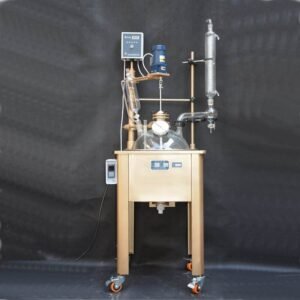
1. Introduction to Chemometrics
Chemometrics is a branch of chemistry that applies mathematical and statistical techniques to design experiments, analyze chemical data, and interpret results. In analytical chemistry, it plays a crucial role in improving accuracy, enhancing data analysis, and optimizing experimental designs. With the increasing complexity of chemical data generated from modern instruments, chemometrics has become an indispensable tool for scientists and researchers.
This article explores how chemometrics is used in various aspects of analytical chemistry, its key applications, and how it enhances the precision and efficiency of chemical analysis.
2. Core Applications of Chemometrics in Analytical Chemistry
- Data Processing and Analysis
Modern analytical instruments generate large volumes of data, and chemometrics helps to process this information more efficiently. It uses multivariate analysis techniques like Principal Component Analysis (PCA) and Partial Least Squares (PLS) to extract meaningful patterns from complex datasets. These methods help researchers identify underlying relationships in data, reduce noise, and highlight significant trends, making it easier to interpret experimental results. - Calibration and Quantification
One of the most common applications of chemometrics is the development of calibration models in analytical chemistry. These models allow for more accurate quantification of chemical compounds in complex mixtures, such as in spectroscopy or chromatography. By using chemometric techniques, researchers can minimize errors, account for sample variability, and improve the robustness of calibration models, ensuring more reliable results. - Experimental Design (DOE)
Design of Experiments (DOE) is a chemometric tool used to plan and optimize experimental procedures. Instead of testing one factor at a time, DOE allows researchers to study multiple variables simultaneously, saving time and resources. This approach helps optimize experimental conditions, ensuring that researchers obtain the most informative results from their experiments while minimizing costs and time. - Pattern Recognition and Classification
Chemometrics is also widely used for pattern recognition and classification of chemical data. In fields such as food chemistry, forensic science, and environmental monitoring, researchers need to classify substances based on complex chemical signatures. Using algorithms like hierarchical clustering and discriminant analysis, chemometrics aids in identifying distinct chemical patterns that may not be immediately obvious, leading to better classification and identification of compounds.
3. Key Fields Where Chemometrics is Applied
- Spectroscopy
Chemometrics is integral to spectroscopic methods, such as NIR (near-infrared), UV-Vis, and FTIR spectroscopy. These techniques often generate overlapping signals, making data analysis challenging. Chemometric methods help resolve overlapping peaks, quantify components in mixtures, and improve signal-to-noise ratios, allowing for more precise and accurate measurements in fields like pharmaceuticals, food science, and environmental analysis. - Chromatography
In chromatography, chemometrics is used to enhance data interpretation and improve resolution in complex samples. For example, techniques like HPLC (high-performance liquid chromatography) and GC (gas chromatography) often require advanced data analysis due to the complexity of the mixtures being studied. Chemometrics aids in identifying compounds, optimizing separation conditions, and improving peak deconvolution for better analysis results. - Environmental Chemistry
In environmental monitoring, chemometrics is applied to assess pollutant levels and trace chemicals in air, water, and soil samples. By using chemometric techniques to analyze large datasets, researchers can track pollution sources, identify trends, and make more informed decisions about environmental protection and remediation.
4. The Impact of Chemometrics on Analytical Chemistry
Chemometrics has revolutionized the way data is handled in analytical chemistry by allowing researchers to manage and interpret increasingly complex datasets. The application of chemometrics in experimental design, calibration, and data analysis has greatly improved the accuracy and reliability of chemical measurements. This leads to more precise results, faster experimental processes, and greater cost-effectiveness in research.
Furthermore, with the rise of machine learning and artificial intelligence, chemometrics continues to evolve. These new tools are being integrated with traditional chemometric techniques to develop more sophisticated models for data prediction and interpretation, further advancing the field of analytical chemistry.
5. Conclusion
Chemometrics has become an essential tool in analytical chemistry, offering powerful solutions for data processing, calibration, experimental design, and pattern recognition. Its ability to handle complex chemical data makes it invaluable in fields ranging from pharmaceuticals to environmental science. As technology continues to advance, chemometrics will play an even more significant role in enhancing the precision and efficiency of chemical analysis.
For researchers and scientists, understanding and applying chemometric techniques is critical to achieving accurate and meaningful results in today’s data-driven scientific landscape.



